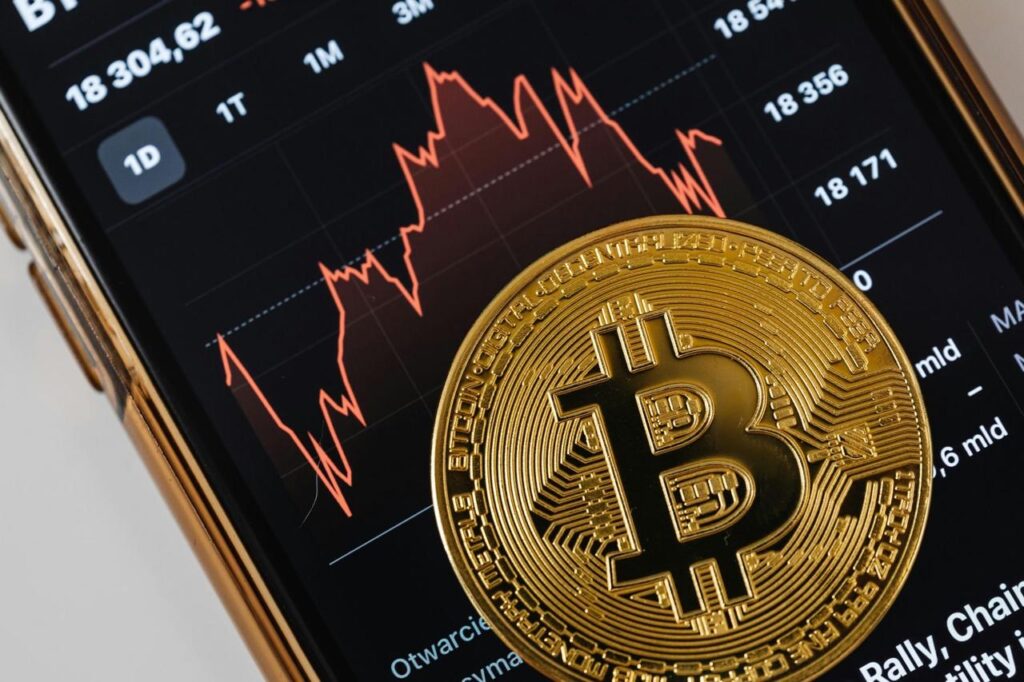When it comes to protecting your money from inflation or economic uncertainty, two popular choices often come up: gold and Bitcoin. Both assets have witnessed significant developments over the past three years (2022–2025), offering contrasting performance, volatility, and adoption trends. Gold’s historical trust continues to appeal to traditional investors, whereas Bitcoin’s rapid rise and innovative potential have captured the attention of a younger, tech-savvy generation.
Why Gold Still Shines
Gold has been a store of value for over 5,000 years. Unlike currencies, which can lose value due to inflation or monetary policy decisions, gold has consistently retained its purchasing power. During financial turmoil—like the 2008 global financial crisis or the 2020 COVID-19 shock—gold prices surged as investors sought safety. That’s why many investors call it a “safe haven.”
Gold’s Proven Track Record
- Long-Term Performance: According to the World Gold Council, from 2001 to 2021, gold delivered an average annual return of about 9.4%.
- Crisis Hedge: During the 2008 financial crisis, gold prices rose by approximately 5%, while the S&P 500 dropped over 35%.
But gold isn’t perfect. It doesn’t earn any interest or dividends, and storing it can be expensive. Also, its price doesn’t move very fast, so it may not give considerable returns in the short term.
Bitcoin’s Bold Role
Conversely, Bitcoin is a newer digital asset that people sometimes call “digital gold.” It’s limited in supply (only 21 million will ever exist), and no central authority controls it. That gives it some protection against inflation and currency devaluation. In 2023 alone, Bitcoin outperformed all major asset classes, rising over 156%.
BlackRock, Fidelity, and other financial giants have filed or launched Bitcoin ETFs, making it easier for mainstream investors to gain exposure.
Bitcoin’s Rapid Growth
- Historical Price Increase: Bitcoin went from being virtually worthless in 2009 to crossing $65,000 per coin in late 2021—a growth rate unmatched by most traditional assets.
- Limited Supply: Bitcoin’s maximum supply is capped at 21 million coins, contributing to its “inflation-resistant” narrative.
Bitcoin’s price, however, can swing wildly—going up and down quickly. That makes it riskier, but it could also offer higher returns, especially when people worry about traditional banking or the economy.
Let’s Break it Down Further
Gold and Bitcoin behave differently. The other might stay steady or even go up when one goes down.
Over the past three years (2022–2025), gold and Bitcoin have offered unique value propositions to investors. In terms of Return on Investment (ROI), gold delivered a steady ~15% gain (from ~$1,800/oz to ~$2,070), while Bitcoin surged approximately 100%, rebounding from a low below $20,000 in 2022 to over $60,000 by 2025. However, this growth came with significantly higher volatility—Bitcoin’s annual volatility ranged from 60–80%, compared to gold’s more stable 12–15%.
Regarding inflation hedging, gold continues to prove its status as a traditional haven, showing a positive correlation with inflation. Although often called “digital gold, ” Bitcoin has demonstrated inconsistent behaviour in response to macroeconomic trends.
In terms of liquidity and adoption, gold enjoys deep global markets and institutional backing. With growing institutional interest and ETF listings, Bitcoin is catching up but still lacks full regulatory maturity.
Finally, on utility, gold serves industrial, ornamental, and monetary purposes. Conversely, Bitcoin opens doors to decentralised finance (DeFi), cross-border transfers, and innovation in blockchain technology. For investors, gold offers time-tested stability, while Bitcoin presents high-growth potential with higher risk.
Gold vs. Bitcoin: Investor Comparison Table (2022–2025)
| Criteria | Gold | Bitcoin | Investor Insight |
| Return on Investment (ROI) | ~+15% | ~+100% | Bitcoin outperformed in returns but with extreme price swings. |
| (Jan 2022: ~$1,800 → Mar 2025: ~$2,070) | (Jan 2022: ~$47,000 → below $20K → Mar 2025: $60,000+) | ||
| Risk / Volatility (Annualised) | ~12–15% | ~60–80% | Bitcoin is significantly more volatile; high reward comes with high risk. |
| Inflation Hedge / Safe Haven | Strong positive correlation with inflation; trusted haven | Mixed behaviour; not consistently aligned with inflation or macroeconomic conditions | Gold remains a reliable hedge in turbulent times. |
| Liquidity & Adoption | Deep global liquidity, accepted by central banks; highly regulated | Growing adoption via ETFs, institutional buyers, and exchanges; still evolving regulation | Bitcoin is growing fast but lacks the maturity and stability of gold. |
| Use Case & Utility | Real-world uses: jewellery, electronics, central bank reserves, long-term wealth preservation | Digital use cases: store of value, DeFi, limited cross-border payments, blockchain innovation | Bitcoin offers disruptive potential; gold offers time-tested reliability. |
The Bottom Line
By looking at actual data—rather than relying solely on opinion—you can make a more informed decision about including gold and Bitcoin in a diversified strategy. As always, consider fees, storage methods, and personal risk tolerance when investing.
(Disclaimer: The content provided in this article is for informational and educational purposes only and does not constitute financial, investment, or trading advice. Arjun Global does not make any guarantees regarding the accuracy or completeness of the information provided, and shall not be held liable for any losses or damages arising from reliance on the content. Always conduct your own research or consult a qualified financial advisor before making any investment decisions.)





